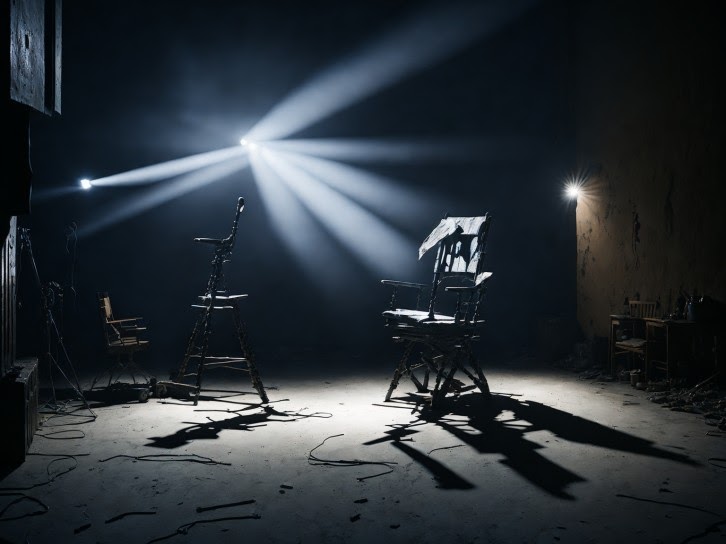
Disclaimer
Please note that the views and opinions expressed in this article are those of the authors and do not necessarily reflect the official policy or position of SpoilerTV.
Hollywood, the epicenter of the global film and television industry, is no stranger to labor strikes. Over the years, these strikes have caused significant economic disruption, leading to layoffs at many studios and bringing financial hardship to thousands of industry workers. The current situation, with both writers and actors on strike, has the potential to create a ripple effect that could reshape the industry in profound ways.
A Look Back at History
Historically, Hollywood writer strikes have had far-reaching implications, causing significant disruption to the industry and beyond. Some strikes have lasted more than 100 days, halting the production of most movies and many popular TV shows. The impact of these strikes extends beyond the immediate industry, affecting the local economy and causing significant financial strain.
Writers have gone on strike more than any other group in Hollywood, with six strikes since 1960. The first strike, in 1960, was a Writers Guild walkout that lasted nearly five months. This set a precedent for future strikes, demonstrating the power of collective action in the face of industry-wide issues.
The 1988 and 2007–8 Writers Guild strikes had a significant impact not only on television but also on major films. Movies like ‘Transformers: Revenge of the Fallen,’ and ‘Quantum of Solace’ were affected by these strikes, highlighting the wide-ranging impact of these events.
The last Hollywood writers strike, in 2007 and 2008, cost writers and other workers an estimated $772 million, while knock-on effects did further damage to the broader economy. The strike also led to changes in labor standards, with streaming platforms shortening TV seasons and hiring fewer writers for each episode.
The current situation has the potential to create similar, if not more severe, disruptions. For instance, a potential strike has wide-ranging implications for the industry and local economy overall, with the cost to the local economy potentially reaching $3 billion if the strike drags on for three months.
These strikes not only disrupt the immediate production of films and TV shows but also have a ripple effect on the broader industry and economy. From hairdressers and camerapeople to caterers, workers across the industry are poised to lose work as productions shut down. This highlights the interconnected nature of the industry and the wide-ranging impacts of such strikes.
The Financial Toll
The financial implications of prolonged strikes in Hollywood are indeed severe. The last writers strike dealt a blow to California’s struggling finances to the tune of $772 million in lost wages for writers and production workers. The financial impacts have already begun to reverberate across nearly every facet of the Southern California economy, from dry cleaners to caterers, all feeling the pinch as the industry grinds to a halt.
If the strike continues, it threatens roughly $81 billion in direct wages from 800,000 jobs in the film and TV industry. This includes not only the wages of the writers and actors directly involved in the strike but also the wages of countless other workers in the industry, from camera operators to makeup artists.
The 2007 writers strike resulted in losses to California’s economy estimated at around $2.1 billion overall, with nearly 38,000 jobs lost. This strike lasted for 100 days and contributed to 37,700 job cuts. If the current strike drags on for three months, it could cost the local economy $3 billion.
The impact of the strike extends beyond the film and TV industry. Local businesses that rely on the industry, such as restaurants and dry-cleaning businesses, are also feeling the effects of the strike. These businesses often cater to industry workers, and the strike has led to a significant decrease in their customer base.
The Writers Guild of America strike isn’t just affecting Hollywood. It’s also creating ripple effects across California’s economy and other states. The film and TV industry is a significant contributor to the economies of these states, and the strike is causing widespread economic disruption.
The Impact on Stakeholders
The strikes in Hollywood significantly affect film and TV marketing plans as well as the schedules of actors, writers, and production companies. A walkout by actors would stop all production of film and scripted television shows in the United States, except for independent productions. This has the potential to disrupt the viewing schedules of millions of viewers worldwide, leading to a possible shift in viewer preferences and habits.
The strikes have already caused restructuring, layoffs, and show cancellations at Hollywood studios. Production companies, foreseeing the possibility of a strike, accelerated production of films and television episodes in an effort to stockpile enough material to weather the strike. However, the longer the strike continues, the more these stockpiles will dwindle, leading to potential gaps in programming and disruptions to the release schedules of films and TV shows.
The impact of the strikes also extends to the advertising industry. Advertisers are having to rejigger their ad spend due to the uncertainty surrounding TV and streaming schedules. While some advertisers have stated they are unlikely to hold back future spending on TV or streaming because of the strike, the situation remains fluid and could change if the strike drags on.
The strikes also have the potential to affect major events in the film and TV industry. For instance, the unavailability of movie stars for promotional events and premieres could impact the marketing and success of upcoming films. This could also affect events like Comic-Con, where stars often appear to promote their projects.
For viewers, the impact of the strike may not be immediately noticeable, depending on their viewing habits. However, as the strike continues and the stockpiled content is used up, viewers may start to see changes in the programming available to them. This could lead to shifts in viewing habits, with viewers potentially turning to other forms of entertainment or content from other regions not affected by the strike.
Changes in Industry Standards and Practices
The strikes could potentially lead to significant changes in Hollywood industry standards and practices. The industry-wide shift from streaming growth at any cost to trying to remain profitable during an economic downturn has contributed to the current situation. If the strike is prolonged, studios may try to exit deals with some writers by exercising “force majeure” provisions in contracts, leading to a potential reshaping of contractual norms within the industry.
Historically, Hollywood has faced labor strife nearly every time a new technology has disrupted how filmmakers, creatives, and other industry employees have been paid and their work distributed. Since 1936, the industry’s unions have gone on strike some 20 times fighting for fair and adequate compensation in the face of challenges arising out of unregulated technological advancements such as kinescope recordings, television, cable, videocassettes, DVDs, and now the internet.
The rapid shift to streaming, while creating an unprecedented swell in content, has significantly eroded pay and working conditions, causing what many view as an existential threat to their livelihoods. The dominance of streaming has toppled the traditional payment model when broadcast networks led the way. Even if the SAG-AFTRA negotiators came back with a 20% increase in streaming residuals, the fees from that form of distribution would still be far from how the old model used to pay.
Another new technology, artificial intelligence (AI), has added another layer of trepidation to the current negotiations. AI represents a “really radical technological change, that has the potential to alter the relationship between writers and actors in the motion picture and streaming industries.” AI could potentially be used to create new episodes of shows, reducing the need for a full writers’ room and posing a threat to writers’ jobs. Actors express similar fears about AI, with concerns about being asked to give up their rights to their likenesses and voices to be used with AI as a matter of routine.
The current labor conflict is also fueled by a resurgence of union activism in Hollywood and other sectors, creating a greater level of solidarity among guilds than in the past. From the first days of the writers’ strike, actors, directors, and others joined the picket lines. Most crew members also have refused to cross picket lines as the WGA targeted individual productions, forcing them to shut down.
A Shift in Entertainment Preferences
The strikes could potentially lead to a shift in the entertainment industry, with viewers possibly turning to other forms of entertainment. However, the specific forms of entertainment that might benefit from this shift are not explicitly mentioned in the sources. This could potentially open up opportunities for other forms of entertainment to gain a larger share of the market.
In the event of a prolonged strike, viewers might turn to video games, which have seen a surge in popularity and sales during past Hollywood strikes. According to NBC News, sales of games alone hit $1.3 billion in November during a previous strike, up 62 percent from the previous year. The gaming industry is not directly affected by the writers’ strike, so while there won’t be much new content on television, video games could continue to provide fresh entertainment for consumers.
Books and audiobooks could also see a boost in sales as people look for alternative forms of entertainment. With the production of new TV shows and movies halted, people might turn to reading as a form of entertainment. This could lead to an increase in book sales, particularly in genres that are popular in film and television, such as mystery, science fiction, and fantasy.
Podcasts could also benefit from the strike. As a form of entertainment that is not directly affected by the strike, podcasts could see an increase in listenership. This could be particularly true for podcasts that offer serialized storytelling, similar to a TV show. Podcasts offer a wide range of content, from true crime to comedy to educational content, providing an alternative for consumers looking for new content.
Additionally, other forms of digital entertainment, such as YouTube videos, could see an increase in viewership. With the production of new TV shows and movies halted, viewers might turn to YouTube for entertainment. This could lead to an increase in views for popular YouTube channels, as well as an opportunity for new channels to gain a following.
In conclusion, the ongoing strikes in Hollywood could have far-reaching implications that reshape the industry in profound ways. The actual outcomes may vary depending on a variety of factors, including the duration of the strikes and the responses from the various stakeholders involved. As the situation unfolds, it will be crucial to keep a close eye on these developments and their potential impacts on the global entertainment landscape.














